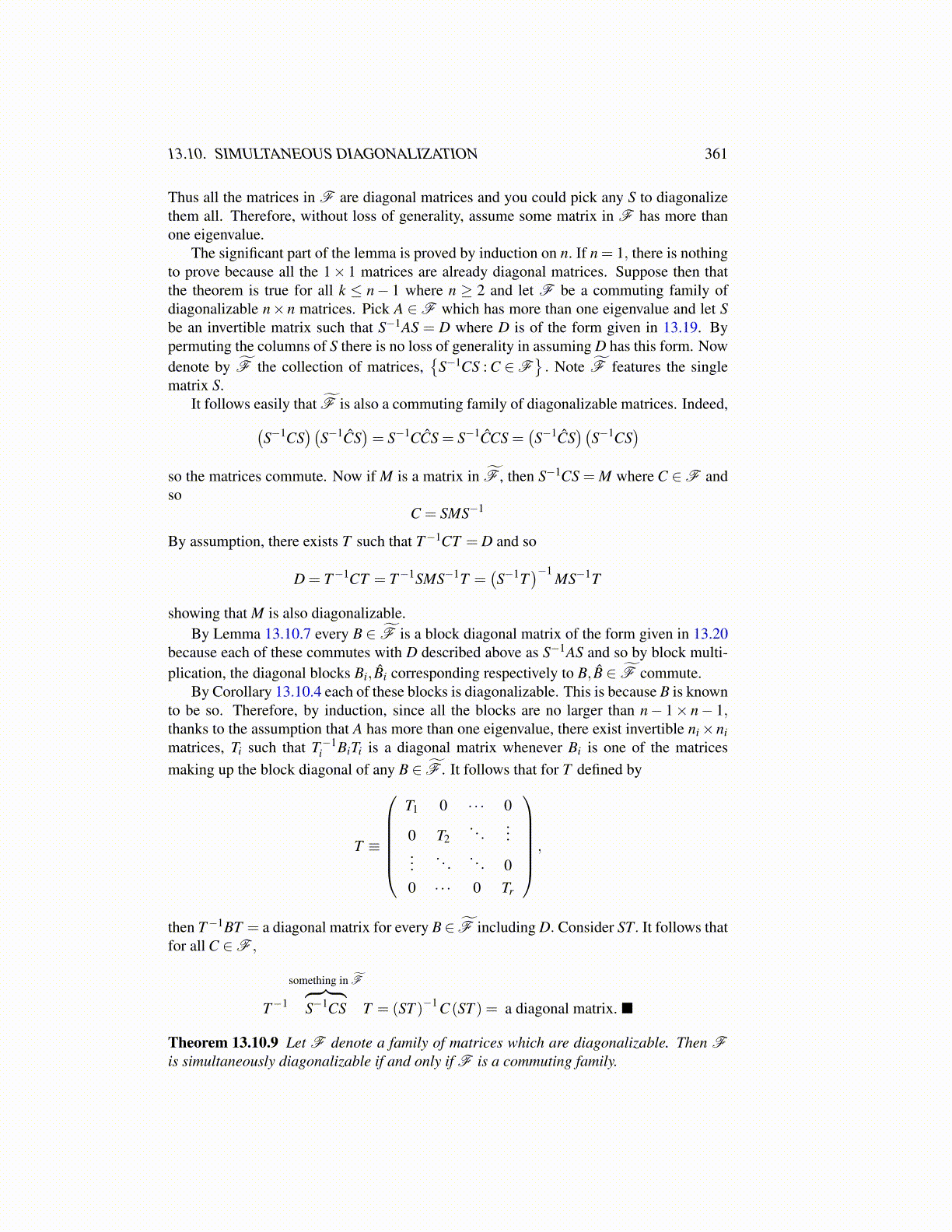
13.10. SIMULTANEOUS DIAGONALIZATION 361
Thus all the matrices in F are diagonal matrices and you could pick any S to diagonalizethem all. Therefore, without loss of generality, assume some matrix in F has more thanone eigenvalue.
The significant part of the lemma is proved by induction on n. If n = 1, there is nothingto prove because all the 1× 1 matrices are already diagonal matrices. Suppose then thatthe theorem is true for all k ≤ n− 1 where n ≥ 2 and let F be a commuting family ofdiagonalizable n× n matrices. Pick A ∈F which has more than one eigenvalue and let Sbe an invertible matrix such that S−1AS = D where D is of the form given in 13.19. Bypermuting the columns of S there is no loss of generality in assuming D has this form. Nowdenote by F̃ the collection of matrices,
{S−1CS : C ∈F
}. Note F̃ features the single
matrix S.It follows easily that F̃ is also a commuting family of diagonalizable matrices. Indeed,(
S−1CS)(
S−1ĈS)= S−1CĈS = S−1ĈCS =
(S−1ĈS
)(S−1CS
)so the matrices commute. Now if M is a matrix in F̃ , then S−1CS = M where C ∈F andso
C = SMS−1
By assumption, there exists T such that T−1CT = D and so
D = T−1CT = T−1SMS−1T =(S−1T
)−1MS−1T
showing that M is also diagonalizable.By Lemma 13.10.7 every B ∈ F̃ is a block diagonal matrix of the form given in 13.20
because each of these commutes with D described above as S−1AS and so by block multi-plication, the diagonal blocks Bi, B̂i corresponding respectively to B, B̂ ∈ F̃ commute.
By Corollary 13.10.4 each of these blocks is diagonalizable. This is because B is knownto be so. Therefore, by induction, since all the blocks are no larger than n− 1× n− 1,thanks to the assumption that A has more than one eigenvalue, there exist invertible ni×nimatrices, Ti such that T−1
i BiTi is a diagonal matrix whenever Bi is one of the matricesmaking up the block diagonal of any B ∈ F̃ . It follows that for T defined by
T ≡
T1 0 · · · 0
0 T2. . .
......
. . . . . . 00 · · · 0 Tr
,
then T−1BT = a diagonal matrix for every B∈ F̃ including D. Consider ST. It follows thatfor all C ∈F ,
T−1
something in F̃︷ ︸︸ ︷S−1CS T = (ST )−1 C (ST ) = a diagonal matrix. ■
Theorem 13.10.9 Let F denote a family of matrices which are diagonalizable. Then Fis simultaneously diagonalizable if and only if F is a commuting family.